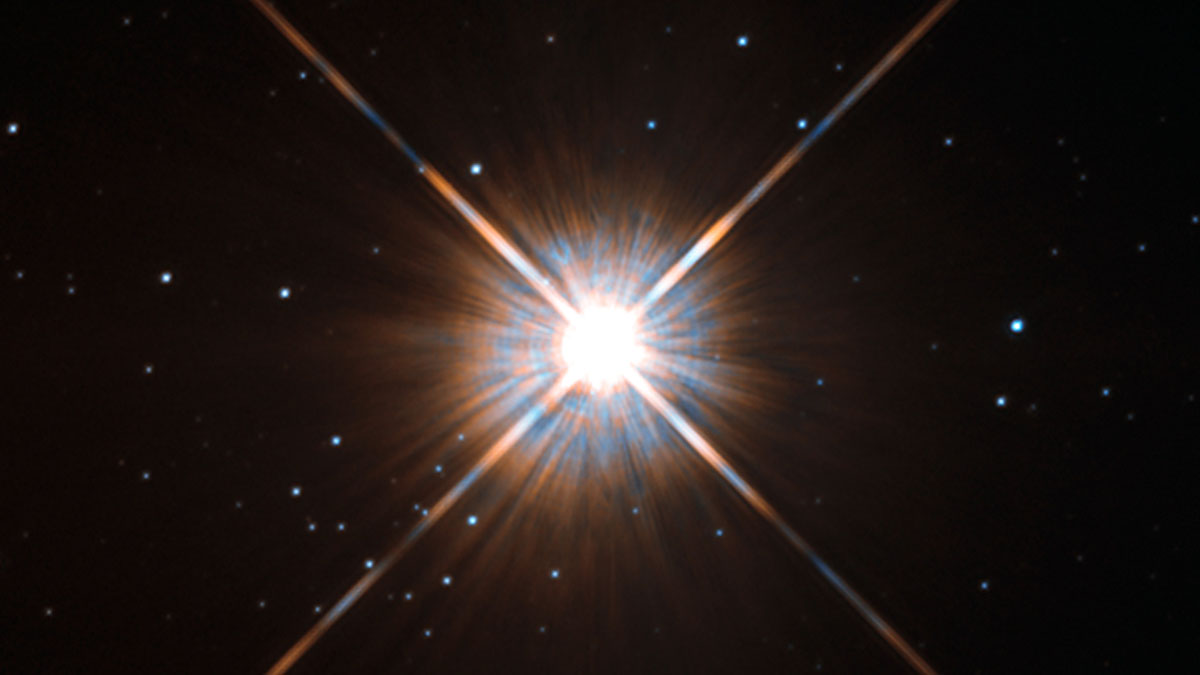
“Artist’s impression of the planet orbiting Proxima Centauri“
Credit: ESO/M. Kornmesser
Caption: “This artist’s impression shows the planet Proxima b orbiting the red dwarf star Proxima Centauri, the closest star to the Solar System. The double star Alpha Centauri AB also appears in the image between the planet and Proxima itself. Proxima b is a little more massive than the Earth and orbits in the habitable zone around Proxima Centauri, where the temperature is suitable for liquid water to exist on its surface.”
It’s good to be skeptical, but it’s also nice to see rumors confirmed by real and exciting announcements: the European Southern Observatory (ESO) announced today the detection of an exoplanet orbiting the nearby star Proxima Centauri. At a minimum mass 1.3 times that of the Earth’s, Proxima b might be a rocky world. With an orbit of 11.2 days around a red dwarf smaller and cooler than our Sun, it might be a wet rocky world. And if there’s liquid water on the surface of Proxima b, then there might be conditions for life. All those mights? Good reasons to continue studying this object, especially because it’s so near.
The exoplanet was detected by measuring the wobble it causes its parent star. There are currently no telescopes capable of taking a direct image of Proxima b, but such telescopes are expected to become available around 2018. Over the next several years, these and other technologies should give scientists the means to pin down the size and mass of Proxima b, detect an atmosphere if there is one, and perhaps even tease out the composition of the exoplanet and any atmospheric gasses.
But just knowing that Proxima b is out there and having a rough estimate for its mass is a big step forward in planetary research and the search for extraterrestrial life. From previous research such as the Kepler Mission, we know the majority of stars have planets, and many of them have rocky planets. Now that we’ve detected Proxima b around our nearest stellar neighbor, it seems even more likely that there are worlds out there that can support life.
Proxima b at 4.25 light years (1.295 parsecs) away is still too far for us to reach in a reasonable amount of time with our best current space travel technology, but it’s tantalizingly close to urge us to improve our remote sensing capabilities and investigate new approaches to interstellar travel. Do you feel the tug from beyond our own solar system to explore? Our own solar system is fascinating enough. Now we’ve got a new planetary destination just one star over, beckoning us to come visit.

“The location of Proxima Centauri in the southern skies“
Credit: Y. Beletsky (LCO)/ESO/ESA/NASA/M. Zamani
Caption: This picture combines a view of the southern skies over the ESO 3.6-metre telescope at the La Silla Observatory in Chile with images of the stars Proxima Centauri (lower-right) and the double star Alpha Centauri AB (lower-left) from the NASA/ESA Hubble Space Telescope. Proxima Centauri is the closest star to the Solar System and is orbited by the planet Proxima b, which was discovered using the HARPS instrument on the ESO 3.6-metre telescope.

You must be logged in to post a comment.